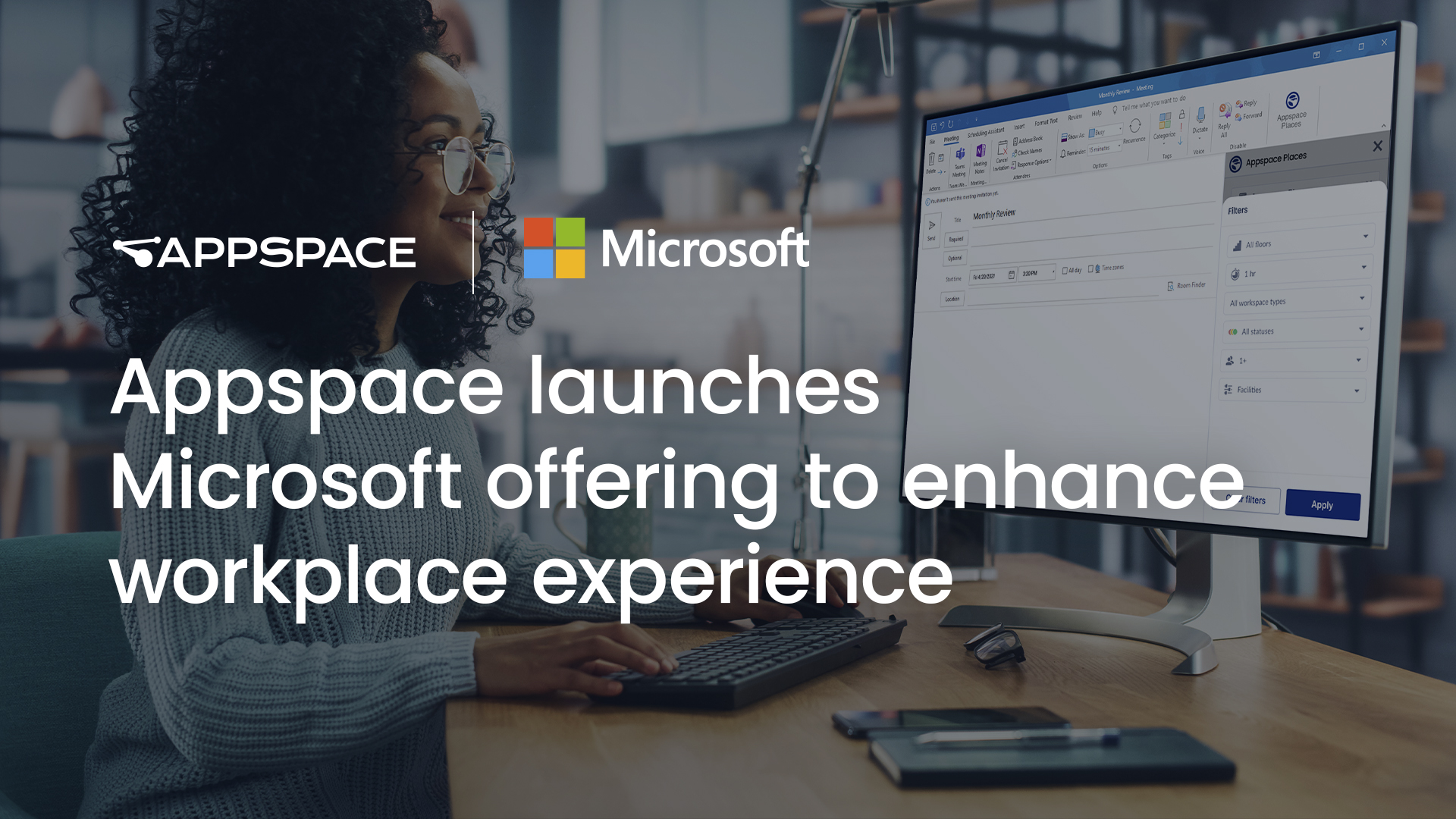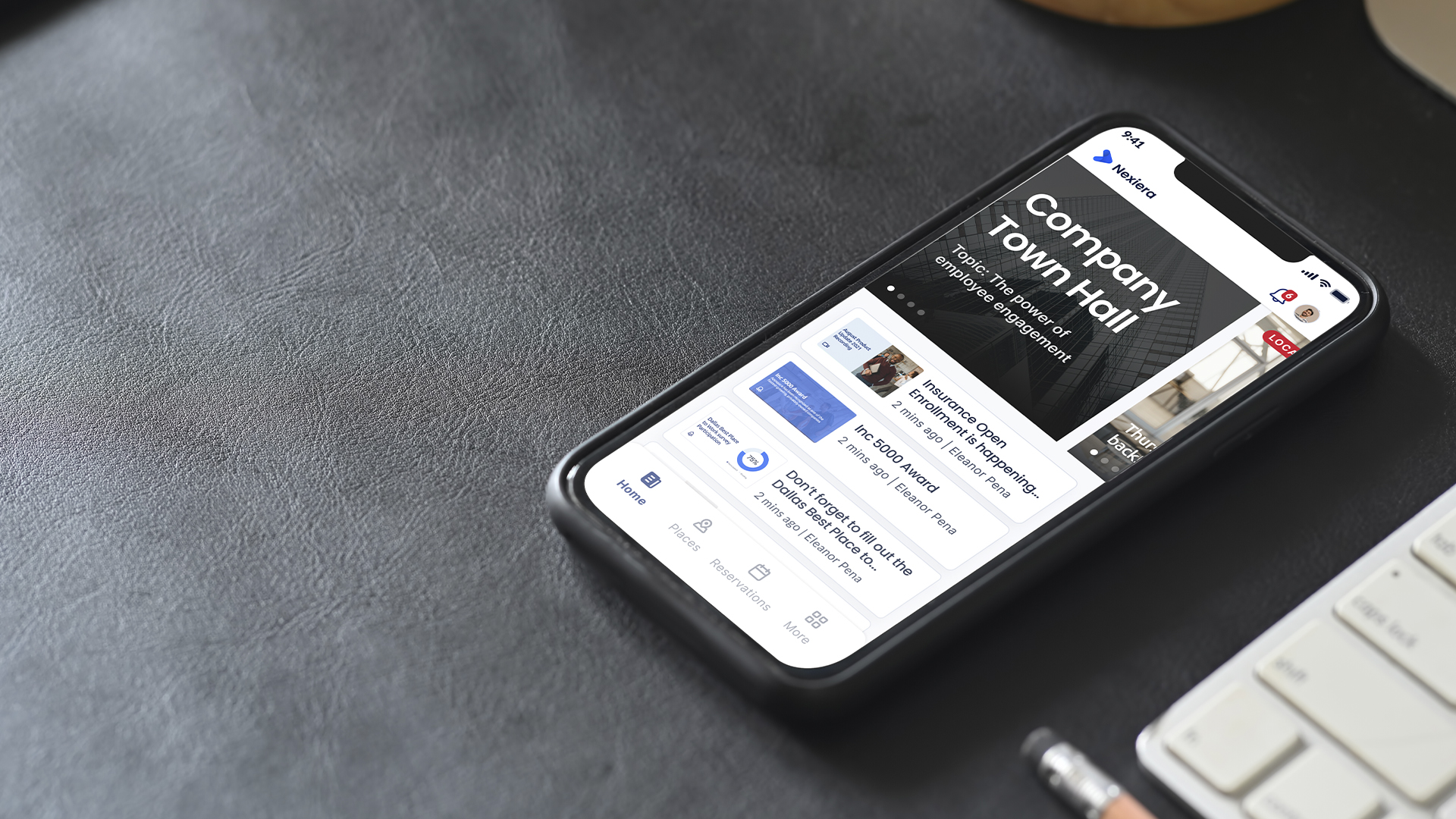Article originally written by Brian Womack and published by the Dallas Business Journal.
Dallas-based Appspace can count Apple and Facebook among the clients it’s helped. And it’s looking for more in the world of COVID-19.
The company, more than 15 years old, has grown as it provides a simple way to send important information to employees over digital screens hanging in offices.
While it’s had its traditional business, Appspace has gone beyond the workplace monitors that might display information from a CEO or key facts for call centers. It’s offering software that can help manage how and when folks use office space. It’s also enabling important messages and information to be sent to employees on various devices. The new efforts are key as business leaders around the world search for new ways to navigate the pandemic.
“We’ve done a lot of contingency planning along the way, and when things happened, we were able to react to it,” CEO Brandon Miles said in an interview. “From a business perspective, we’re psyched.”
While other software services can handle collaboration, Miles pointed out that Appspace provides works with those platforms to offer a more powerful and pervasive one-to-many type of communication.
The company is growing. It’s added an estimated 50 people or more this year – and now stands at about 220. It’s set to grow to 250 by the end of the year. The company’s offices include Europe, Asia, and Australia.
The growth has come after the company landed a recapitalization deal of about $30 million with LLR Partners, an investment firm in Philadelphia.
“We started realizing there was so much more we could do, and we just needed a balance sheet to let us go do that,” he said. “We just needed to go faster, and we needed to do that with some more capital.”
That came before the pandemic. Miles is looking ahead and sees growth opportunities with more employees and a stronger leadership team.
What was the plan with screens as your company got going?
We made a conscious decision not to go into more or less customer-facing environments, such as casinos or outdoor billboards or ad-based networks or retail chains. Our sweet spot was within the corporate space, so we focused on internal communication, using the same technology.
We do have customers that use this across the board. It’s a very malleable technology. At its core, it’s just a content management system that allows you to get information out to these various displays and play them back while you’re managing what’s on what screen and what time. You’re able to put together a playlist, if you will, of content from the CEO’s message all the way down to the department manager’s message, all the way down to a welcome (message to an individual). It’s very relevant and contextualized messaging.
The software allows you to combine a lot of information from many different authors into this curated playlist that’s very specific to that location at that time. Japan is different than Brazil, which is different than Dallas, which is different from New York.
What products have you been adding of late?
It was more enhancing and bringing them to the market and letting people know that it was available. We had done a lot of work; we had room reservation systems, meaning you could go in and find a space and book a space using a tablet in the office.
We released a guest registration product so that at the front desk, somebody could come in and use a kiosk basically to register as a guest, sign whatever they need to sign. And then that would notify the person inside the office that their guest was waiting. We enhanced our overall kiosk product. So, tons and tons of just product enhancements and new things that people were asking for. And that started pretty much a year ago – last summer. And then that set us up for what was happening in March.
Interestingly, the vision that we had when we were doing the investment round – people asked what happens in a downside scenario, and it ended up actually happening. Our five-year vision happened in about five months, which was that if you really want to save money, you’re going to have to shrink your office footprint. You’re not going to cut technology investments that help you save those dollars, and that’s just what we found from every one of our enterprise customers.
They’re enabling this hybrid work environment, so a lot of the stuff we had been planning for – and it was almost a nice to have for our big customers – suddenly became a must-have in this new reality.
Can you talk about what that looks like more?
In this new work environment, you’ve got to know who’s coming into the office – and at what time. When COVID hit, they started asking us for more of the workplace management or space management tools. And we were able to get those in their hands within you know, one quarter.
So how else did you survive the pressures of COVID?
We quickly realized that companies still want to communicate, but they had a much more difficult problem because everybody was remote. So very easily, we transformed how you aggregate that content and publish that content and do that into Slack, into Microsoft Teams, into Webex Teams, and into SharePoint.
They could use the same workflow, the same tool, and the same department used to communicate on TVs. We just made it pretty simple for them to do that in the ways that people receive that information at home – on their phones and their laptops. It’s no longer just a single purpose of getting content on TVs – it was able to get that content wherever you were. So they were thrilled to hear that. That’s on the communication side.
That’s why we weren’t too worried about the fact that people weren’t in the office because we knew we could extend that reach to wherever they were. That was in the roadmap for a very long time. On the other side of the business, we never thought that the offices would be shut for good. What we thought would happen is people were going to need a plan to get back in the office and work safely and do this on the schedule that made sense for them. And that was going to require space management tools.
This interview has been edited for brevity and clarity.




